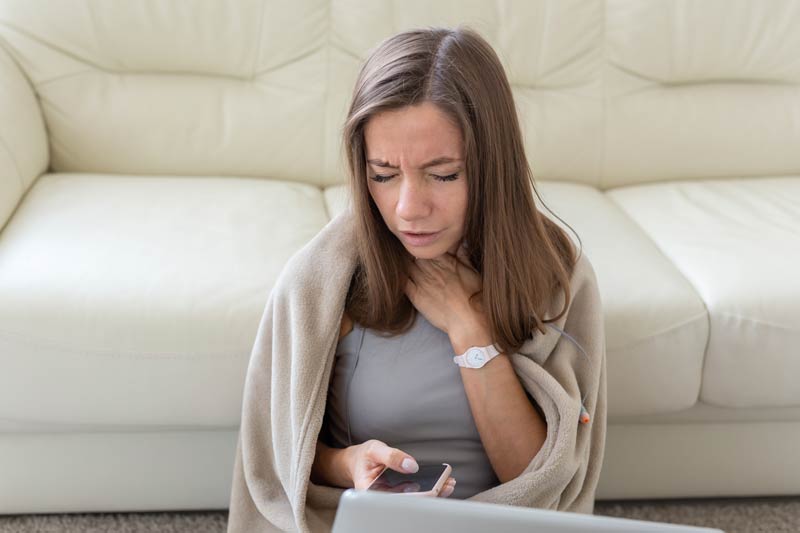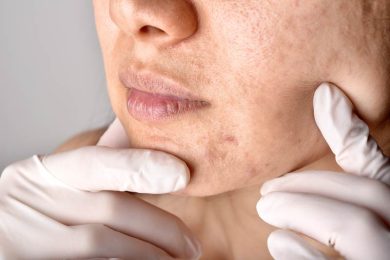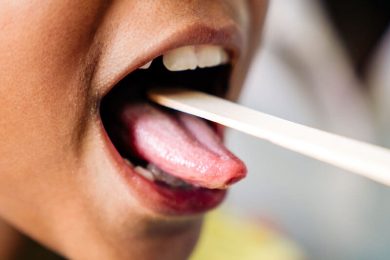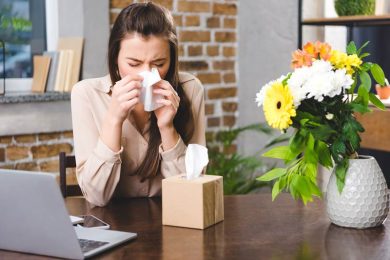What is Postnasal Drip?
Your body produces mucus constantly throughout the day—one to two quarts, to be exact. It mixes with saliva and is swallowed, a normal and harmless response that you usually don’t notice. When excess mucus is created or is thicker than usual, it becomes noticeable as it runs down the back of the nose to the throat. This is known as postnasal drip.

What Causes Postnasal Drip?
An excess of mucus can be caused by a variety of factors. These include colds, flu, allergies, sinus infections, cold temperatures, bright lights, certain foods, hormonal changes (including pregnancy), fumes from chemicals or perfumes, certain types of medications, and structural abnormalities such as a deviated septum. The condition might not even be the result of too much mucus, but rather, the inability to clear it away effectively from your throat—which can be the result of a swallowing disorder.
What are the Symptoms of Postnasal Drip?
What is the Treatment for Postnasal Drip?
Treatment for postnasal drip depends on the cause. Over-the-counter medications—antihistamines, decongestants, and saline nasal sprays—are often used successfully to manage symptoms. Drugs containing the mucus-thinning agent guaifenesin (Mucinex, Robitussin, etc.) may prove helpful.
Cryoablation of the posterior nasal nerve is an in-office procedure that can significantly reduce postnasal drip.
You can try irrigating the nasal passages using a Neti pot to get rid of excess mucus. Use of a humidifier to moisten the air can also help. If a bacterial infection is the cause, you’ll need antibiotic treatment. Gastroesophageal reflux disease (GERD), a frequent cause of swallowing problems, can be treated with antacids.
If home remedies do not provide relief, and your postnasal drip symptoms persist, contact our team to schedule an appointment.
What is Rhinitis?
Rhinitis is similar to hay fever, but is caused by something other than an allergen. Dubbed non-allergic rhinitis to differentiate the two, it produces cold-like symptoms that can leave you feeling miserable and worn-down. It may take allergy testing to rule out hay fever and accurately diagnose non-allergic rhinitis.
What Causes Rhinitis?
Rhinitis is common and can be brought on by a variety of factors. Viruses, bacteria, and other irritants can all cause symptoms.
Some of the more common triggers include:
- Viral infections (colds and flu)
- Changes in the weather
- Airborne irritants (dust, smog, perfume)
- Foods and beverages (hot foods, spicy foods, alcohol)
- Stress
- Hormonal changes (pregnancy, menstruation)
- Certain medications (aspirin, ibuprofen, beta blockers)
What Are the Symptoms of Rhinitis?
Symptoms of non-allergic rhinitis are similar to those you experience with a cold. Runny nose, nasal congestion, sneezing, and postnasal drip are all common, and may continue indefinitely or come and go.
Unlike hay fever, non-allergic rhinitis doesn’t cause itchy eyes, nose, or throat. The absence of these symptoms is a good indicator that you are suffering from rhinitis rather than hay fever caused by allergies. Non-allergic rhinitis isn’t just bothersome; if untreated, it can cause nasal polyps, chronic sinusitis, and ear infections.
How Is Rhinitis Treated?
Your ENT doctor will diagnose non-allergic rhinitis based on your symptoms and medical history, but will want to rule out an allergic cause through skin and/or blood tests. Sinus problems present similar symptoms, so you may also need a nasal endoscopy or CT scan to rule out nasal polyps or a deviated septum.
The treatment you are prescribed will be based on the severity of your symptoms. Mild cases of rhinitis may respond to simple home remedies; irrigation of the nasal passages with a Neti pot or bulb syringe, using a humidifier to moisten the air, and drinking lots of liquids can all help. If you know specifically which substance is causing you misery, avoid it if possible. It’s always a good idea to avoid cigarettes and alcohol.
In addition, your doctor may recommend over-the-counter or prescription drugs. These include antihistamines, decongestants, and saline and corticosteroid nasal sprays. Surgery is likely going to be required for nasal polyps, a deviated septum or any other physical abnormalities.
What is ClariFix?
How Does ClariFix work?
ClariFix uses a treatment method called “crytotherapy” to reduce symptoms. Unlike other treatments like nasal sprays and over-the-counter pills, it addresses the root of the problem—the inflamed nasal tissue and underlying nerves.
The device works by delivering cold temperatures to balance the nerves in the nose. This stops symptoms at the source. Four out of five patients report long-lasting improvement with ClariFix.
Schedule an Appointment Today
Schedule an Appointment Today
If you are interested in ClariFix or would like to learn more about other options for rhinitis and postnasal drip treatments, request an appointment or call us at (979) 693-6000 to speak with our team today.

ClariFix FAQs
1. How long will it take before my symptoms improve?
Patients typically see improvement between two and four weeks after treatment.
2. Can I feel the device?
Some patients report feeling slight nasal pressure, a cooling sensation around the nose, and/or molars and other mild discomfort.
3. Are there any side effects?
The most common side effects are temporary worsening of congestion and brief pain/discomfort.
4. How long does treatment take?
Most patients spend about an hour at the doctor’s office when getting ClariFix.



















